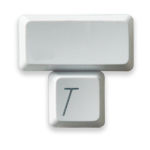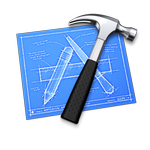
We shall neither fail nor falter; we shall not weaken or tire ... give us the tools and we will finish the job.
Winston Churchill

We shall neither fail nor falter; we shall not weaken or tire ... give us the tools and we will finish the job.
Winston Churchill
Gear
22 August 2009
There is a great set of tools for development on OS X and the iPhone. Many of my favorites are by small developers. I want to give all of these tools a shout-out for making things so much easier.

Blacktree’s Quicksilver is a great Finder replacement, letting me use just a couple of keystrokes to open almost anything. Although development has apparently stopped, and there are great alternatives like Objective Development’s LaunchBar, I really like Quicksilver.

Ergonis’ Typinator comes in handy everywhere because it lets you define keyboard shortcuts for commonly typed text. It’s great for those repetitive messages in emails, code, and web development.

Aquaminds’ NoteTaker is my memory - I store everything in it. I use it to keep notes on involved processes that I rarely do but must remember, to keep track of good ideas, and to keep drafts of articles I write. The notebook metaphor works well for how I think. It reminds me of notebooks I kept in graduate school, but ones that are far more useful because they are fully searchable and can easily include everything: text, clippings, files, and more.

Xcode and Interface Builder may be the only game in town when it comes to Objective-C development for OS X, but they’re a good game. The text editor is fine (even though I love BBEdit), and the code completion and keyboard shortcuts are real time-savers. In addition to Xcode, I use Clang, a great static analyzer, to check my code. It amazes me with its ability to identify memory leaks and flaws in my code’s logic. I also use Andy Matuschak’s excellentSparkle so my users can easily install my updates. The Subversion integration makes version control straightforward.

Although I really like Xcode’s documentation, Andy Lee’sAppKiDo is a great companion for searching through API’s or nailing down the syntax of a function call. There’s a version for OS X and another for the iPhone.

Mind Vision’s FileStorm makes the preparation of disk images a snap. I don’t often need to do this, and the simplicity of the interface assures I’ll get it right when I need to do it.

I’ve always been more comfortable with vector graphics than bitmaps, so all my artwork is rendered first as a vector image in Illustrator, then I export it as a .png for editing elsewhere. Sure it’s not by a small developer, but it’s an incredibly powerful tool.

I know Photoshop is far more powerful, but I’ve used Lemkesoft’s GraphicConverter since the dawn of time. It’s familiar and lets me make those simple edits quickly. GraphicConverter’s ability to translate file formats are simply legendary. I continue to be tempted by the well-designed Acorn by Flying Meat, though.

Bare Bones’ BBEdit is another program I’ve used almost as long as I’ve used a Mac. I’ve checked out other text editors, but BBEdit always pulls me back. The grep-based single-file and multi-file searches are its killer features for me. When I ’m getting a website up for the first time or I have serious repetitive modifications to make to a file, BBEdit is the tool. BBEdit is also great for checking the syntax and links not only in single files, but across an entire website.

The interface and integration of Panic’s Coda can’t be beat. With six websites to manage, this considerably speeds the process. I don’t use the Terminal or Books features much, but the Editor is great for adding or editing single files, the Preview is quick and accurate, and the CSS panel is helpful when I can’t remember the name or syntax of some attribute. The Save and Upload icons make it plainly visible what needs to be updated, and uploading is fast. The syntax checker is great, but I wish it also had a link checker. Subversion support just makes it even sweeter.

Feeder by Reinvented Software is my new love. I used iWeb for doing this blog, but the code it generated was just a horror show, and its insistence on loading the entire site every time was becoming unwieldy. Once I rewrote the site using BBEdit, Feeder gave me a quick and intuitive way to update the RSS feed. They’re not kidding when they say it makes RSS as simple as email. It also handles the Sparkle updates.

Cultured Code’sXyle scope is critical for identifying odd webpage formatting, usually the result of an unforeseen clash in css’s box model. Xylescope lets me see with just a couple of clicks the margins, border, and padding of any element and has never failed me in identifying the problem.